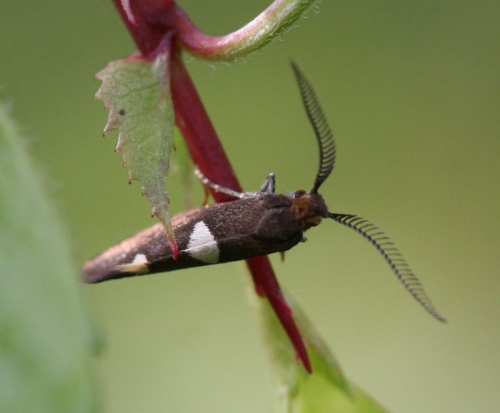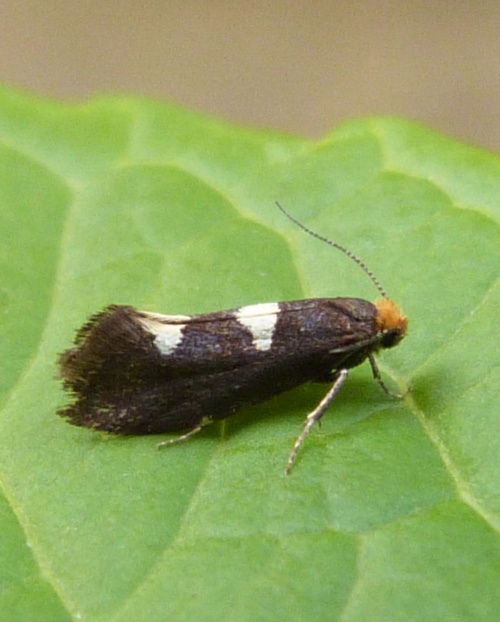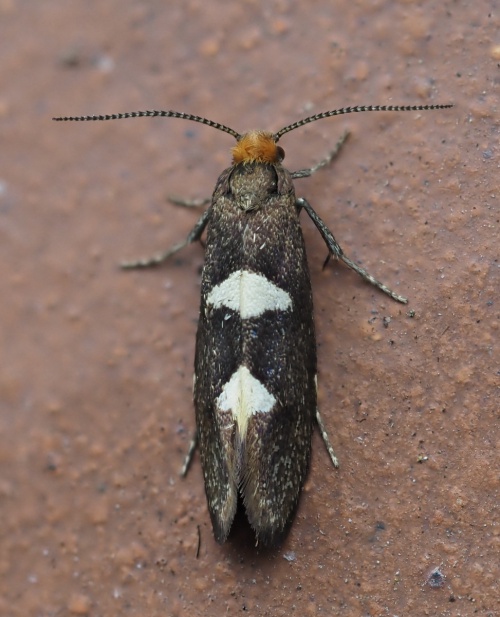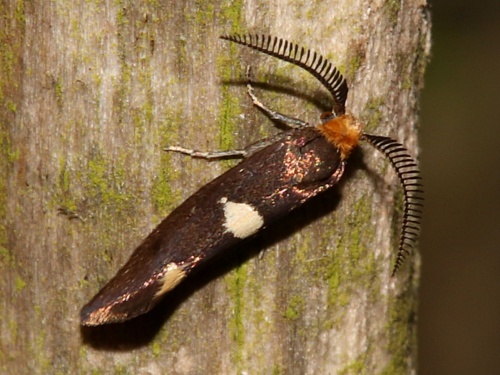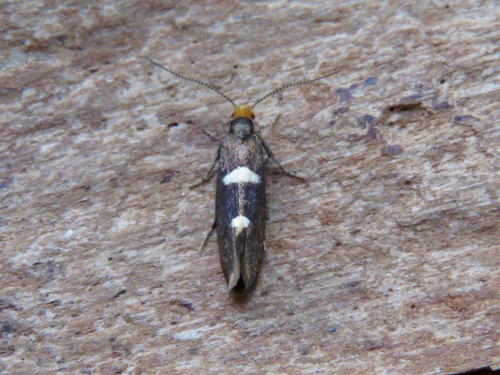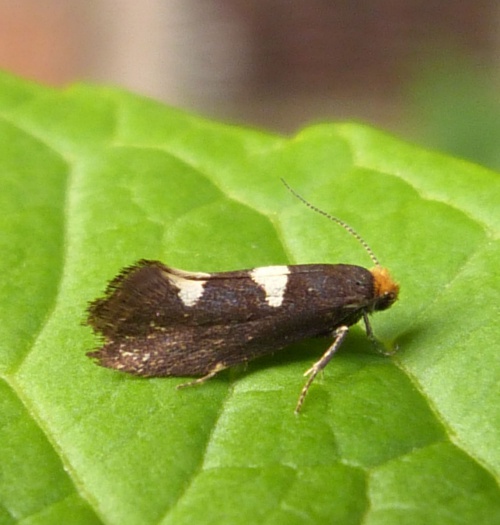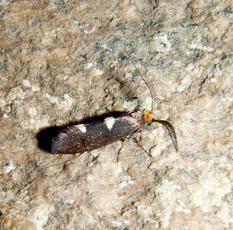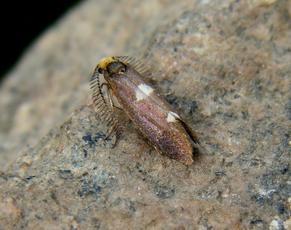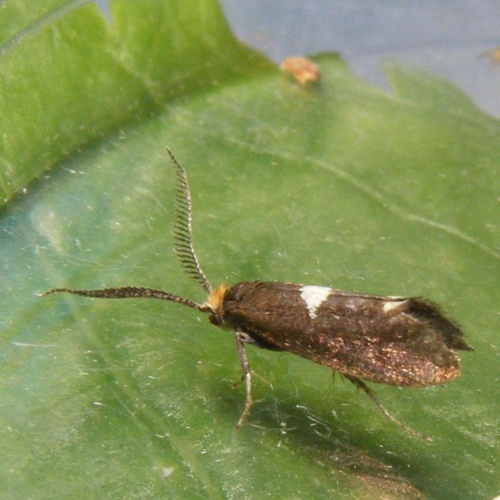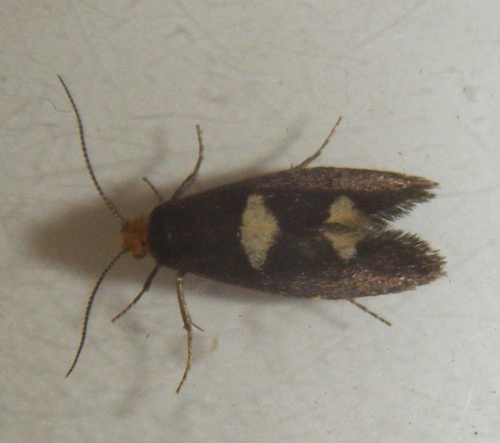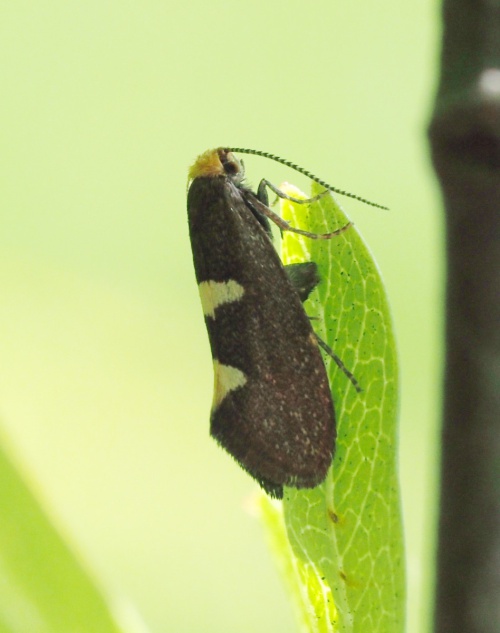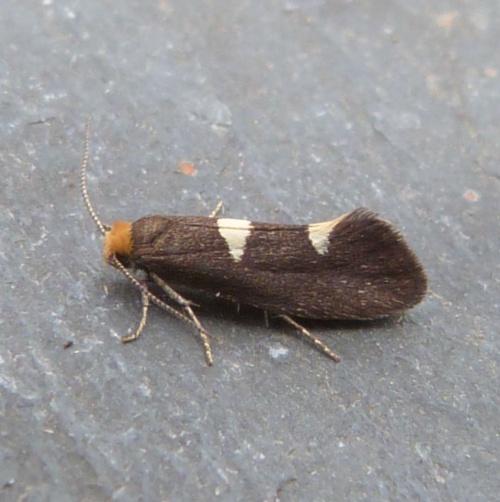Incurvaria masculella
Feathered Bright
Feathered Leaf-cutter
Wingspan 12-16 mm. The males of this moth have comb-like antennae, a feature unusual amongst the 'micros'. When viewed from certain angles, they also show a purplish metallic sheen.
In areas with plenty of bushes and trees.
Flies during May and early June.
The larvae mine leaves at first, later descending to the ground in a portable case and feeding on dead leaves. A number of deciduous trees and bushes can be used, but especially Hawthorn.
It is a fairly frequent moth over most of Britain, with most records coming from southern England and from Wales. In the Butterfly Conservation’s Microlepidoptera Report 2011 this species was classified as common.
Fairly frequent but not common in Leicestershire and Rutland. L&R Moth Group status = B (scarce resident or restricted distribution or regular migrant)
Leicestershire & Rutland Map
Enter a town or village to see local records
MAP KEY:
Yellow squares = NBN records (all known data)
Coloured circles = NatureSpot records: 2020+ | 2015-2019 | pre-2015
UK Map
Species profile
- Common names
- Feathered Bright
- Species group:
- Moths
- Kingdom:
- Animalia
- Order:
- Lepidoptera
- Family:
- Incurvariidae
- Records on NatureSpot:
- 44
- First record:
- 13/05/2004 (Skevington, Mark)
- Last record:
- 12/04/2024 (Nicholls, David)
Total records by month
% of records within its species group
10km squares with records
The latest images and records displayed below include those awaiting verification checks so we cannot guarantee that every identification is correct. Once accepted, the record displays a green tick.
In the Latest Records section, click on the header to sort A-Z, and again to sort Z-A. Use the header boxes to filter the list.


